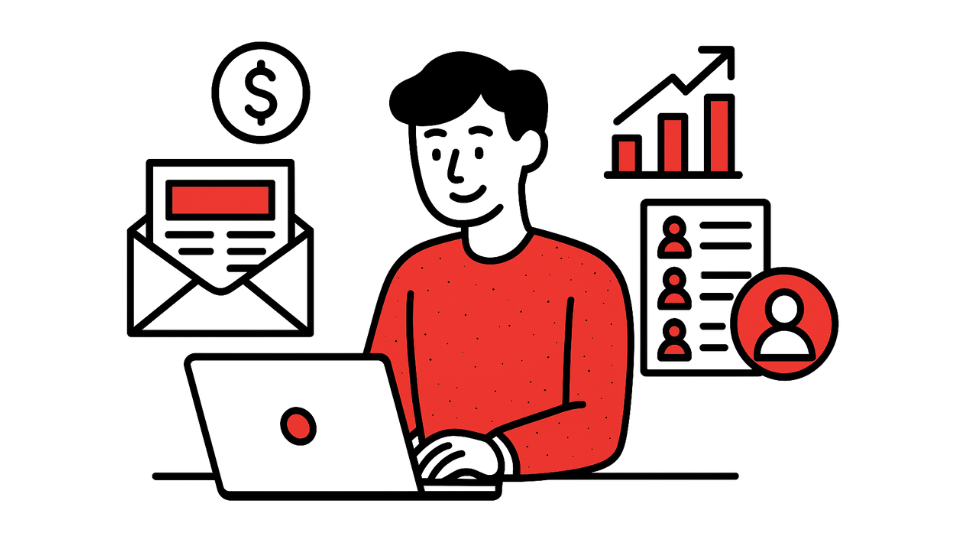
I used to be allergic to newsletters.
Now I run three on Beehiiv with 22,000+ subscribers.
Here’s what I learned:
1. The Economics Surprised Me
Most of my subscribers came from people who downloaded one of my or courses. But I also experimented with paid ads. I was able to acquire subscribers for $0.50 each via Meta ads (vs a typical $3-4). I spent around $1,800, gained 3,700 subscribers. One subscriber bought my 4-figure course, which almost covered my entire ad spend.
2. Multiple Revenue Streams Add Up
• Beehive ad network: I get paid $1-1.50 per click for each sponsor I include in my newsletters
• Newsletter recommendations (via Beehiiv Boosts): I get paid when subscribers join partner newsletters (also around $1.50 per recommendation).
• Product sales: I sell products & services via my newsletters (books, courses, consulting, speaking). Email converts way better than social.
3. You Own Your Audience
Social algorithms change overnight. Email stays yours. Every product launch proves it. Email conversions crush social media. It’s not even close.
4. Solved My “List Burning” Fear
I used to hesitate emailing my list about products. Newsletters fixed this. My formula is similar to the content-to-ad ratio used on every major platform (typically 3:1 or 4:1). So I have 5 total sections in each newsletter: 4 content-related (give), one promotion-related (ask). People expect it and don’t mind.
5. Content Creation Is Manageable
• Repurpose everything (tweets, book excerpts, podcast episodes, course snippets, etc.).
•Curate others’ content with commentary.
•Use AI for editing and improving your content (avoid writing the whole newsletter with AI – people can tell)
•Skip publishing on weeks when you don’t feel like writing. Nobody cares and most won’t notice. Especially if your newsletter is free.
6. Specificity Beats Generality
My philosophy (not everyone agrees with this): I run 3 focused newsletters instead of 1 general one.
This helps me target specific problems for different audiences vs. talking about everything in just one newsletter.
Here are my three:
• Side Gig Hacks (4K subscribers): Learn how to publish books & courses on the side.
•Leadership 80/20 (16K subscribers): Learn the 20% of actions that drive 80% of results with your team.
•AI for Leaders (3K subscribers): Learn how to use AI to improve communication and team productivity.
Each is delivered 1x per week and takes less than 5 minutes to read.
7. Free Book Strategy Works
I give away a free bestselling book for each newsletter subscriber. This attracts some freebie seekers and I lose money on a potential book sale. But it also provides immediate value and qualifies interested readers. Pros outweigh cons.
8. Clean Your List Regularly
Unsubscribe anyone who hasn’t opened in 90 days. Painful but necessary. Open rates improve significantly.
9. Platform Matters
Beehiiv isn’t cheap, but the monetization features pay for themselves. Built-in ad network, recommendations, and analytics. I already made my annual investment back.
10. Test Before Building
Use newsletters to validate and presell products. E.g., I mentioned a new course, got 8 pre-sales at $400 each and a couple at $1400 before finalizing the sales page.
Reality Check: This took time and some weeks I don’t want to write. But newsletters became my most reliable business asset. I wish I started sooner. My allergy to them cost me years of audience building.
***
P.S. This is a summary of a Twitter/ X space discussed I had on SmallBets.com – you can listen to the full discussion on my podcast by clicking here.
P.P.S. I use Beehiiv for all my newsletters (I moved away from AWeber). If you’d like to try them out, use this affiliate link, and you’ll get a 30-day free trial and 20% off your first 3 months of any paid plan.